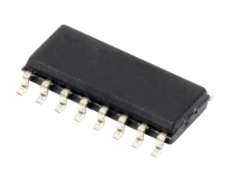Dynamically Adjustable Output Using the TPS63000
Texas InstrumentsThis application report provides a schematic and design procedure for implementing a dynamically adjustable output for the TPS63000 using a digital-to-analog converter or other input voltage source.
MSP430 32-kHz Crystal Oscillators (Rev. B)
Texas InstrumentsMSP430 32-kHz Crystal Oscillators MCU_SLAA322B_ZHCA445B | /ASPD/MSP430/App_Reports/SLAA322/SLAA322
U-510 Using the bq2031 to Charge Lead-Acid Batteries
Texas InstrumentsThe bq2031 fast-charge IC has two primary functions: lead-acid battery charge control and switch-mode power conversion control. This application note discusses the operation of the bq2031 and describes a switch-mode buck regulator charger using the bq2031.
TMS320C5x Interrupts and the Pipeline
Texas InstrumentsThis document discusses interrupt handling and the effect of interrupts on the pipeline. If an interrupt is pending and is subsequently enabled by a CLRC instruction where would it be taken and what happens when it returns from the ISR?
The Benefits of Using Linear Equalization in Backplane and Cable Applications
Texas InstrumentsSN65LVCP1412, SN65LVCP1414, SN65LVCP114 The Benefits of Using Linear Equalization in Backplane and Cable Applications
10MHz Analog Multiplier Carries Output Amp Breaks Bandwidth Barrier
Texas InstrumentsWith the introduction of the MPY634 multipliers wideband analog multiplication need no longer be a multicap affair or imply performance compromises. Along with its 10MHz small-signal bandwidth the four-quadrant chip has a laser-trimmed DC accuracy of 0.25% and adjustable scale factor and the ability to drive loads down to 2kΩ.
FFT Implementation on the TMS320VC5505, TMS320C5505, and TMS320C5515 DSPs (Rev. B)
Texas InstrumentsThe Fast Fourier Transform (FFT) is an efficient means for computing the Discrete Fourier Transform (DFT). It is one of the most widely used computational elements in Digital Signal Processing (DSP) a
Using TMS320C6416 Coprocessors: Viterbi Coprocessor (VCP) (Rev. D)
Texas InstrumentsViterbi Coprocessor (VCP) is a programmable peripheral for decoding of convolutional codes integrated into Texas Instruments' TMS320C6416 DSP device. The VCP is controlled via memory mapped control registers and data buffers. Control registers can be accessed directly by the CPU whereas data buffers are typically accessed using the EDMA controller. This application note describes the relationshi
Composite Op Amp Gives You The Best of Both Worlds
Texas InstrumentsClassical op amps such as the OPA627 have excellent performance in applications where the required gain bandwidth is low compared to the gain-bandwidth product of the op amp. However increasing closed-loop gain decreases the error-reducing loop gain. Furthermore starting at relatively low frequencies the loop gain rolls-off at 20dB/decade of signal frequency increase. In combination these effec
TI Power Management Solution for Freescale? i.MX31 (Rev. B)
Texas InstrumentsThis document details the voltage, current, and sequencing requirements for the i.MX31 and shows how to power it using the TPS650240.
AN-1824 FlexCap Technology Simplifies LDO Design (Rev. A)
Texas InstrumentsThe low dropout (LDO) voltage regulator brings the advantage of power savings to system design byreducing the voltage required to maintain output regulation. However the traditional LDO has alwaysbrought with it the disadvantage of placing tight restrictions on the equivalent series resistance (ESR) ofthe output capacitor in order to keep the regulator stable. This requirement has been elim
Using High Speed CMOS and Advanced CMOS in Systems With Multiple Vcc
Texas InstrumentsThough low power consumption is a feature of CMOS devices sometimes this feature does not meet a designer?s system power supply constraints. Therefore a partial system power down or multiple Vcc supplies are used to meet the needs of the system. This document shows electrostatic discharge protection circuits. It also provides circuit and bus driver examples of partial system power down and curren
AN-663 Sound Effects for the COP800 Family
Texas InstrumentsApplication Note 663 Sound Effects for the COP800 Family
AN-2069 LM3445 - 230VAC, 6W- 15W Isolated Flyback LED Driver (Rev. B)
Texas InstrumentsApplication Note 2069 LM3445 - 230VAC, 6W- 15W Isolated Flyback LED Driver
Implementation of Echo Control for ITU G.165/DECT on TMS320C62xx Processors
Texas InstrumentsThis application note describes the implementation of multichannel echo control on a TMS320C62xx processor core that can cancel echoes with a 4-32-ms delay. This software is based on the leaky normalized least mean square (LMS) filter with either 16- or 32-bit weighting coefficients.
How to Implement SHA-1/HMAC Authentication for bq26100 (Rev. A)
Texas InstrumentsHow to Implement SHA-1/HMAC Authentication for bq26100





